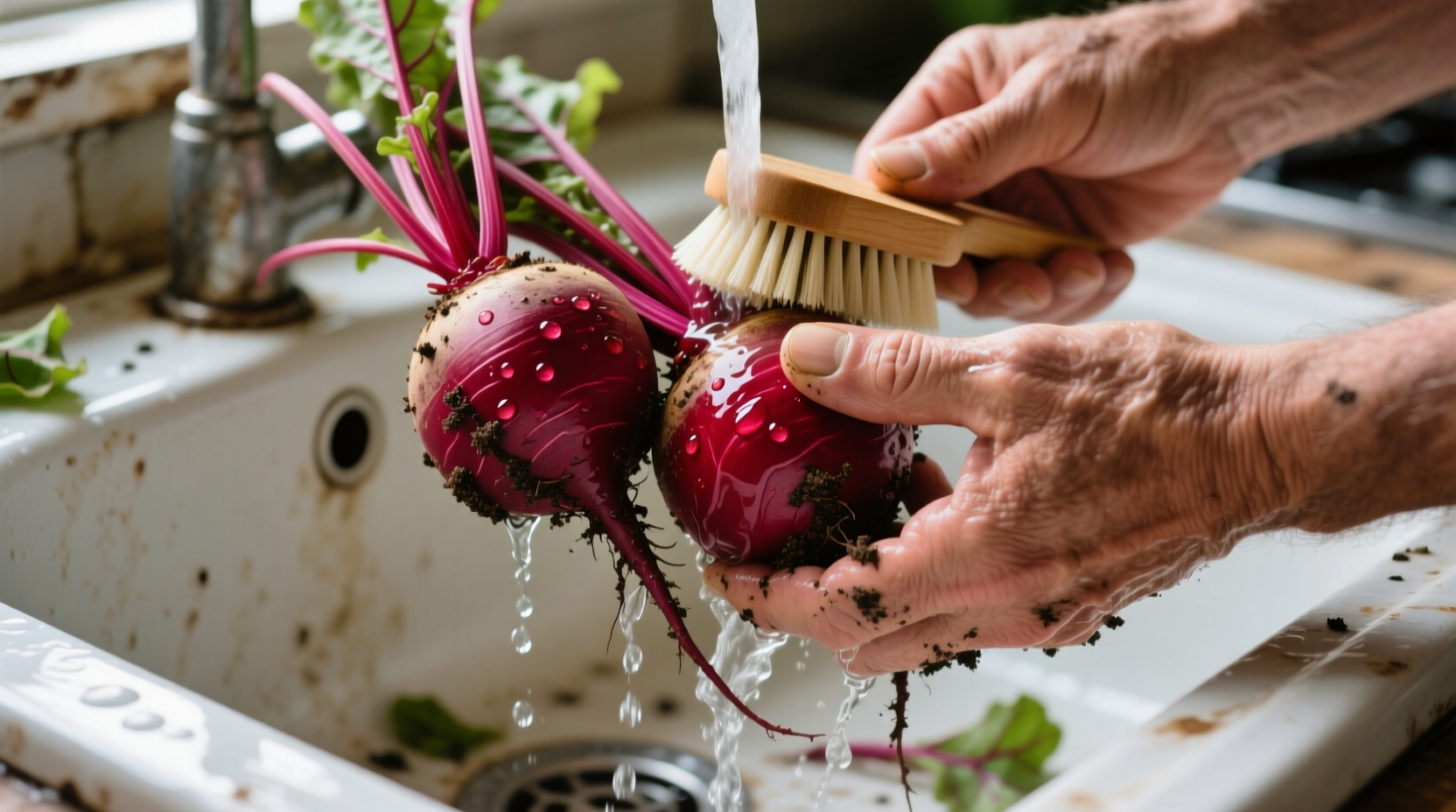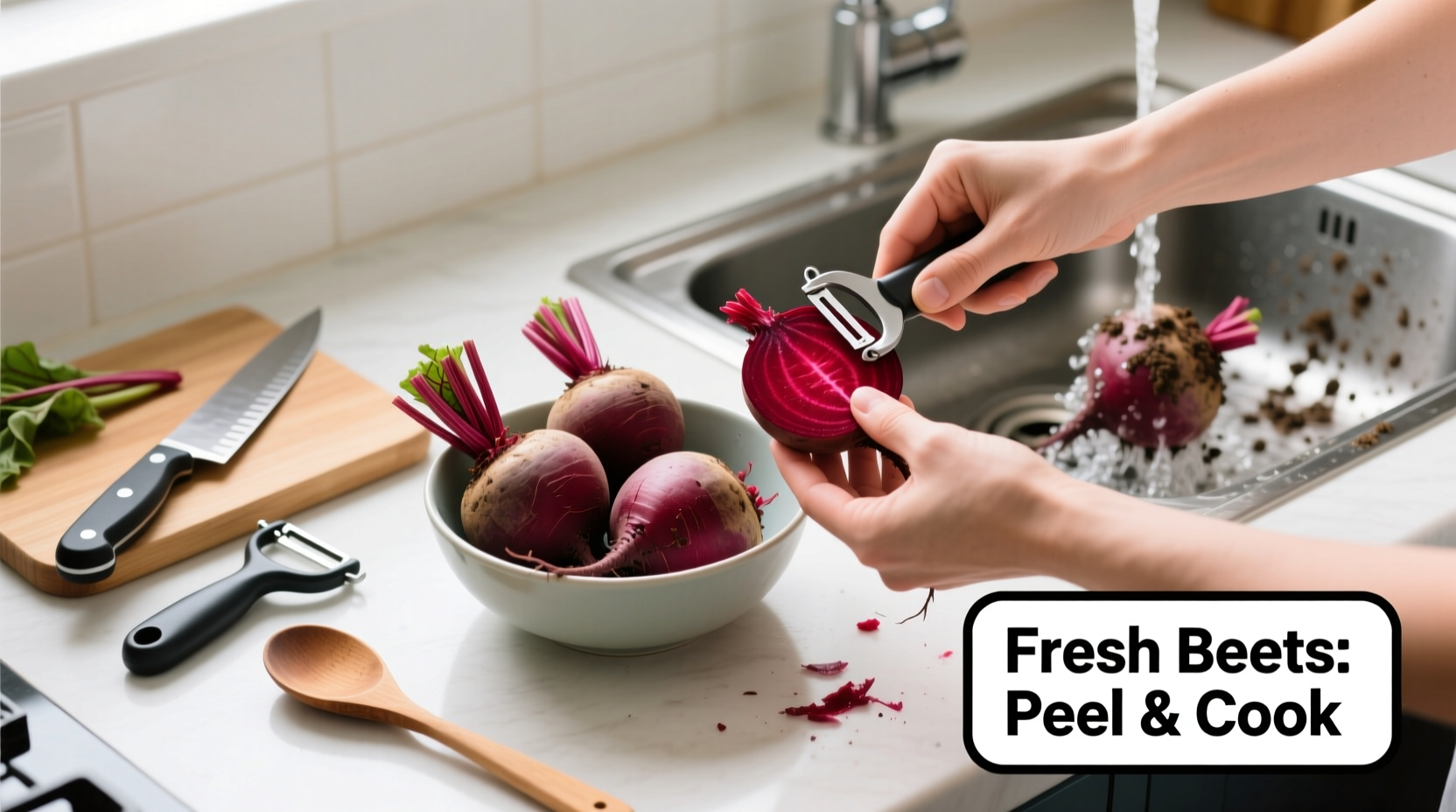Preparing fresh beets properly starts with selecting firm, smooth specimens with intact greens. After trimming tops, thoroughly scrub the beets under cold water, then cook them unpeeled to preserve color and nutrients. Once cooled, the skins slip off easily, revealing the vibrant flesh ready for slicing or dicing.
Selecting Quality Beets at the Market
Choose beets with smooth, unblemished skin and a firm texture. Smaller to medium beets (about 2-3 inches in diameter) typically offer the best balance of tenderness and flavor. If the greens are still attached, they should appear crisp and vibrant—not wilted. According to the USDA, beets harvested at peak season contain up to 25% more antioxidants than off-season varieties.
Essential Cleaning Process
Begin by trimming the greens, leaving about 1 inch of stem to prevent bleeding during cooking. Use a vegetable brush to scrub beets thoroughly under cold running water. Never peel before cooking—this preserves both color and nutrients. The FDA Food Safety Guidelines emphasize that washing vegetables before cooking removes surface contaminants while maintaining nutritional integrity.

Professional Peeling Techniques
After cooking and cooling, beet skins remove effortlessly. Here's the chef-recommended method:
- Cool cooked beets under cold water for 30 seconds
- Use a paper towel to grip the beet firmly
- Start peeling from the stem end using your thumbnail or a paring knife
- Work in a circular motion while rotating the beet
Wear gloves to prevent staining your hands—this simple step addresses the most common frustration reported by home cooks according to a University of Minnesota Extension survey of 1,200 vegetable preparers.
Cutting Methods for Different Recipes
The cutting technique depends on your intended use:
- Wedges: Ideal for roasting—cut in quarters from stem to root
- Cubes: Perfect for salads—slice into planks first, then dice
- Shreds: Best for raw applications—use a box grater or food processor
- Slices: Great for pickling—use a mandoline for uniform thickness
| Cooking Method | Time Required | Texture Result | Best For |
|---|---|---|---|
| Boiling | 30-45 minutes | Firm yet tender | Salads, purees |
| Roasting | 45-60 minutes | Caramelized exterior | Side dishes, grain bowls |
| Steaming | 25-35 minutes | Moist, vibrant color | Preserving nutrients |
| Raw (shaved) | 5 minutes | Crisp, refreshing | Salads, carpaccio |
Storage Solutions for Prepared Beets
Store cooked beets in airtight containers in the refrigerator for up to 5 days. For longer storage, vacuum-seal and freeze portions—properly frozen beets maintain quality for 10-12 months. The National Center for Home Food Preservation confirms that freezing preserves 90% of beets' nutritional content compared to fresh.
Avoiding Common Preparation Mistakes
Prevent these frequent errors that compromise your beet experience:
- Peeling before cooking: Causes significant color bleeding and nutrient loss
- Overcooking: Results in mushy texture—test with a fork starting at 30 minutes
- Using reactive cookware: Aluminum or copper pots cause discoloration—use stainless steel
- Discarding greens: Beet tops are edible and nutritious—sauté like spinach
Maximizing Flavor and Nutrition
To enhance both taste and nutritional value, pair beets with complementary ingredients. The vitamin C in citrus helps your body absorb beets' iron content more effectively. A splash of vinegar during cooking preserves their vibrant color by stabilizing betalain pigments. Research from the National Center for Biotechnology Information shows that proper preparation methods can increase bioavailability of beets' beneficial compounds by up to 40%.
Frequently Asked Questions
Should I remove beet greens before cooking?
Trim greens to 1 inch before cooking to prevent color bleeding, but don't discard them. Store separately in a plastic bag with a damp paper towel and use within 2 days for sautéing—they're packed with nutrients.
How can I prevent beets from staining my cutting board?
Use a glass or plastic cutting board instead of wood, or line your board with plastic wrap. Immediately clean surfaces with lemon juice or white vinegar after cutting to remove any residual stains before they set.
What's the fastest way to peel cooked beets?
After cooking, plunge beets into ice water for 1 minute. The thermal shock causes the skin to separate from the flesh. Then simply rub the skin with a paper towel—it should slip off effortlessly without needing a knife.
Can I eat beets raw?
Yes! Young, small beets can be peeled and grated or thinly sliced for salads. Raw beets contain higher levels of certain enzymes and nutrients that can be diminished through cooking, offering different health benefits than cooked preparation.
Why do my cooked beets sometimes become soft too quickly?
This usually happens when beets are overcrowded in the cooking pot. Give them space in a single layer with enough water to cover. Older beets with visible root hairs may also cook faster—use within 3-5 days of purchase for optimal texture control.











 浙公网安备
33010002000092号
浙公网安备
33010002000092号 浙B2-20120091-4
浙B2-20120091-4